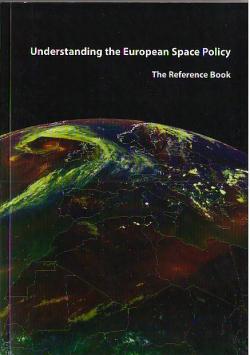Understanding the European Space Policy: The Reference Book
In recent years there has been an increasing European focus on the space domain. Space systems have proved to be a reliable tool for supporting various European policies, among others those related to security, environment, climate, health, sustainable development, information technology and international affairs. The growing European interest in space activities is highlighted in relation to three main aspects: political and strategic; economical; and societal aspects. The reference book poses three important questions: Why is Europe interested in the space domain? What is the role of the EU in the space domain? How space is being used in Europe? The approach is academically rigorous but presented in an accessible form that still reflects the complexities of space as a subject.
Reference book prepared within the frame of the C-Space (Conditions for Space Policy and related Action Plan Consolidation in Europe) project, conducted by the Fondation pour la recherche stratégique (FRS) in cooperation with Centre national de la recherche scientifique (CNRS), Romanian Space Agency (ROSA), Swedish Defence Research Agency (FOI), Istituto affari internazionali (IAI), Royal Aeronautical Society (RaeS), and funded by the European Commission-FP7..
1. Why is Europe Interested in the Space Domain?
1.1. Political and Strategic Aspects, p. 12
1.1.1. EU in the international context
1.1.2. R&D as an identity driver for the European Union
1.1.3. Security and independence
1.2. Economic Aspects, p. 19
1.2.1. Industrial performance
1.2.2. Market potential
1.2.3. Wider socio-economic impact
1.3. Societal Aspects, p. 23
1.3.1. How space contributes to the information and knowledge society
1.3.2. Societal needs and space answers
1.3.3. How is space influencing culture
2. What is the Role of the EU in the Space Domain?
2.1. Existing Strengths at the Root of the European Space Policy, p. 31
2.1.1. ESA programmes
2.1.2. European space programmes
2.2 Elements Contributing to the European Space "Engine", p. 34
2.2.1. Member states' programmes
2.2.2. Cooperation programs
3. How Space is Being Used in Europe?
3.1. How is Europe Taking Advantage from Space?, p. 40
3.1.1. Space services and end-users
3.1.2. Other applications: science, exploration, security and defence
3.2. Players and their Organization, p. 50
3.2.1. European institutions
3.2.2. Industry
3.2.3. National space agencies
3.3. Ensuring Sufficient Resources for a Sound European Space Policy, p. 63
3.3.1. The EC budget
3.3.2. ESA budget
3.3.3. National budgets - national support for European space
4. Challenges and Opportunities
4.1. Thematic Challenges, p. 74
4.1.1. European challenges
4.1.2. International challenges
4.2. Cross-Cutting Challenges, p. 83
4.2.1. Governance and funding
4.2.2. ESA-EC perspective
4.2.3. EU-MS perspective
4.2.4. Civil-military perspective
4.2.5. Public-private perspective
4.2.6. Improving the sharing of data and results
4.2.7. Ensuring a sustainable funding
5. Appendix
Societal needs and space, p. 96
EC R&D projects, p. 99
Reference documents, p. 102
Endnotes, p. 105
Acronyms, p. 106



